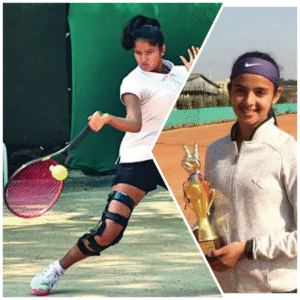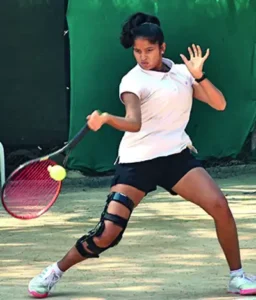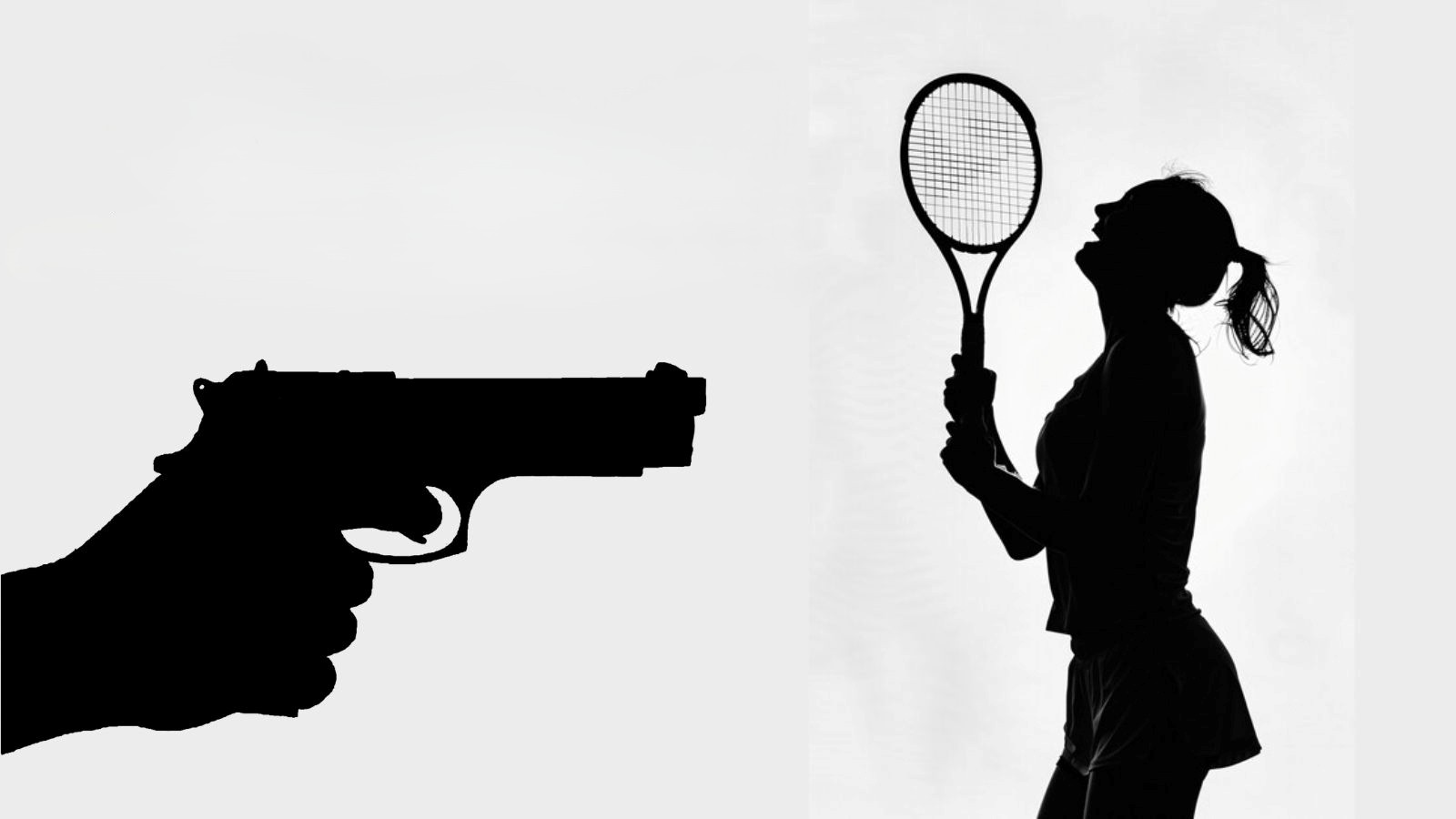
25-year-old Indian tennis star Radhika Yadav was shot dead by her father in Gurugram on July 10. Here are 5 chilling facts about the incident and her career.
1. A Brief Career in Numbers: Grit, Goals, and Growing Dreams

Radhika Yadav, just 25 years old, had participated in 35 professional matches, achieving a modest but hard-fought 5-win record. This amounted to a 14.29% win rate—far from elite, but deeply reflective of a young athlete steadily building her presence on the Indian tennis circuit. She earned approximately ₹77,000 (~$934) over her short career.
Notably, she reached a career-best ITF doubles ranking of 113, a significant milestone in a competitive international field where visibility and resources are often limited for Indian women players. These numbers may not headline international tournaments, but they narrate the story of a player grinding on the margins—playing without major sponsorships, funding her travel, and investing hours into every serve and volley. Radhika’s stats told the story of a dream in progress, not yet fulfilled.
What stood out most in her journey was her resilience. In a world that glorifies instant success, Radhika’s slow but steady progress was a reminder of how real dreams are built—brick by brick, match by match.
2. A Life Interrupted: The Fatal Morning in Sushant Lok

On the morning of July 10, 2025, in Gurugram’s Sector 57, an ordinary day took a tragic turn. During a household argument—reportedly over her repeated filming of Instagram reels—Radhika was shot by her father using a licensed pistol.
Five shots were fired. Three struck her, including two in the back. She was rushed to a hospital, but succumbed to her injuries soon after. The father was arrested at the scene. Neighbours reported hearing shouting before the shots rang out, but none could have imagined the devastating outcome.
The home, located in the upscale Sushant Lok area, was known for its quiet and affluent surroundings. But what occurred inside those walls revealed that even in the safest neighborhoods, emotional tension can simmer until it explodes. The licensed firearm, which many assumed was for protection, became the very instrument of destruction.
This wasn’t just a crime. It was the collapse of a home.
3. Who Was Radhika Yadav? More Than Just a Player

Radhika was not a top-seeded sensation, but she was among the many Indian athletes rising quietly and with resolve. Born in 2000, she juggled training, travel, and life as a budding professional tennis player, often on the state-level circuit.
Her international standing placed her among India’s hopefuls, and her ranking of 113 in ITF doubles (https://tenniskhelo.com/player/radhika-yadav/415998) was a clear reflection of her progress. She represented her state multiple times, trained without privilege, and earned admiration in small-town tennis circuits. Her peers describe her as “disciplined, cheerful, and always focused during training.”
She carried not just a racket, but the weight of expectations—from her family, her coach, and a society where female athletes still fight for equal recognition. Her journey symbolized hope for many girls chasing dreams in Indian sport.
Friends noted how she often filmed her training and life on Instagram, not just for vanity, but to connect with young athletes, seek sponsorship, and inspire others. In many ways, Radhika represented the intersection of new-age identity and old-world discipline.
Her murder is a brutal reminder of how fragile that balance can be.
4. Instagram Reels & Family Tensions: A Deadly Divide

At the center of this tragedy lies a tragic irony—social media, a platform for connection and expression, became the alleged trigger for fatal violence.
Radhika loved creating reels, especially around tennis, training, and lifestyle. But for her father, these were distractions—or worse, sources of family embarrassment. Reports suggest repeated fights over what he saw as an “addiction.”
Instagram, with over two billion users globally and millions in India alone, is more than a pastime for young athletes—it’s a tool for branding, outreach, and in many cases, survival. Yet, the generational rift between her and her father couldn’t bridge this understanding.
This wasn’t just about Instagram. It was about freedom, identity, expression, and a home where love collided with control.
In a household with growing emotional distance, sometimes it’s not the action itself but the meaning we assign to it that creates friction. For Radhika, reels were ambition. For her father, they were a rebellion. The tragedy was not caused by social media, but by a disconnect that ran too deep, for too long.
5. Devastation Beyond the Court: A Family, a Community, a Nation
The ripple effects of Radhika’s death stretch far beyond the four walls of her Gurugram residence. Her family is shattered, her peers in shock, and the larger Indian tennis community is grieving the loss of a potential-filled career.
Authorities are investigating not just the shooting, but also whether any mental health factors or prior warning signs were ignored. Many are questioning how a licensed firearm remained accessible during a family conflict.
Her death has also reignited public discourse around domestic violence, often hidden in middle-class urban households. Behind the closed doors of so-called “safe homes” lie stories of anger, silence, and emotional isolation.
In response, the Tennis Federation of India has called for enhanced support systems for players, including mental health resources and family counseling initiatives. NGOs working on domestic violence have pointed to the need for broader education for parents, coaches, and athletes alike.
Her murder is not just a personal loss; it is a national reckoning.
Final Reflections & A Call to Action
This tragedy raises pressing questions—and demands urgent answers:
- Are families equipped to handle the emotional stress their children face, especially those in high-pressure careers like sports?
- Are we normalizing control in the name of parenting while dismissing young people’s voices and ambitions?
- Is enough being done to support athletes—especially women—beyond the training court?
- Are mental health resources truly reaching the people who need them the most?
- How do we bridge generational gaps in a digital world that’s evolving faster than ever?
The answers are uncomfortable, but necessary.
For every Radhika whose story makes the headlines, hundreds suffer silently—burning out, breaking down, or worse. Her death must be a catalyst, not a statistic.
Concluding Thoughts
Radhika Yadav was more than a tennis player. She was a dreamer, a daughter, a fighter. Her journey was just beginning. And while we’ll never know how far she could’ve gone, we do know that her story shouldn’t just end with tragedy.
If this heartbreaking incident pushes even one family to choose understanding over anger, if it compels authorities to prioritize mental health and emotional safety, if it causes the sports ecosystem to better protect its players, then Radhika’s legacy will live on.
Let her not be remembered for how she died, but for what she stood for: ambition, resilience, and the right to be herself, in a world that must learn to listen better.
For more Updates, visit: The Morning Draft

